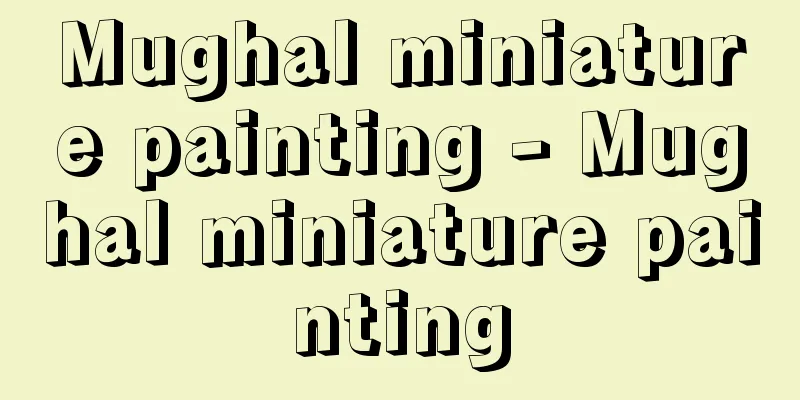Satire (English)

|
An expression of a critical or aggressive spirit toward society or individuals in reality. Satire is derived from the Latin satura, and the etymology of the Renaissance that linked it to the Greek god Satyros is incorrect. Satura is based on the adjective meaning "full," and it meant "assorted dishes." It originally referred to poetry that combined several poetic forms. The exact time when it came to refer to satirical poetry is unknown. The style of the works of Menippos, a philosopher of the 3rd century BC, who developed satirical content in a mixed form of poetry and prose, is known as Menippian or Varroian satire, imitating the Roman writer Varro (116-27 BC) of the 1st century BC. The Roman poet Lucilius of the 2nd century BC is also considered to be the founder of satire. The essence of satire is determined by two aspects: the reality of the subject and the unique attitude of the mind toward it. First of all, satire can be distinguished from works such as the fables of Aesop, whose target is human life in general. Attacking reality means that satire is born of indignation, and it is different from calm irony, moralistic depictions, and even comic literature such as parody. On the other hand, however, curses, insults, and protests, which are direct expressions of indignation, cannot be called satire. For something to be satire, it is necessary to keep a distance from the target and express indignation in a restrained manner. This unique attitude is the essence of satire, and its expression often involves exaggerated distortions of the target and shows wit. [Kenichi Sasaki] Satirical poetryIn ancient Greece, satire was written in the iambic format, but the tradition of this genre originated in Rome. Representative poets include Horace, who inspired Lucilius with a refined and intimate style, the difficult Persius, and Juvenal, who showed passionate intensity. Juvenal in particular was considered a model for modern satire. In the Middle Ages, satire existed under various names, but representative poets of the revived Roman satire were Renier and Boileau in France, and B. Johnson, Dryden, and Pope in England. Chenier's satire, written in prison during the Revolution, is also unique. The subject matter of satire covers a wide range of human affairs, but the main themes are people's way of life and personalities (one of the most popular themes was "women"), politics, and literature. In poetry, there is the epigram, which should be distinguished from satire. Epigrams also have satirical content, but they are characterized by their brevity, and their real strength lies in the interestingness of linguistic expression. In contrast, satirical poems are long enough to include a narrative development. In satirical poems, the subject being satirized appears as the narrator. This subject of satire is distinct from the poet, and can be seen as embodying the "distance from the subject" mentioned above. This is more noticeable in other forms of satirical literature such as plays and dialogues, because in these forms the author's presence disappears between the lines, and in extreme cases, the subject of satire is denied in the end by being alienated from society, such as Alceste in Molière's Misanthropy and Gulliver by Swift. This is where the obscurity unique to satire can be seen. [Kenichi Sasaki] Other SatireIf we turn our attention to other forms of satire, the first to be mentioned among the plays are the ancient comedies of Aristophanes. There is no equal for their vividness and power, but among the comedies of the modern era, there are satirical works by Molière, Johnson, Gogol, and others. As mentioned above, the satirical dialogue is an important form, and its prototype can be found in Lucian, who was also influenced by Menippus. In the modern era, Erasmus and Diderot showed their talents in this form. The epistolary form has a similar effect to the dialogue, and examples of this include the Reformation fighter Hutten's Letters from Unknown Men, and Montesquieu's Letters from the Persians. Other notable authors and works of stories and novels include the medieval "The Fox's Tale," S. Brandt's "Ship of Fools," Rabelais, Chaucer, and Cervantes in the 16th century, Voltaire's "Candide," Swift's "The Tale of the Tub" and "Gulliver's Travels" in the 18th century, and more recently Dickens's "Bleak House," parts of Joyce's "Ulysses," and Orwell's "1984." [Kenichi Sasaki] Visual satireAlthough the essence of satire mentioned at the beginning can best be realized through language, it does not reject visual expression. There is a separate entry for "cartoon art," but if we say a word about satirical cartoons, excluding things like graffiti, we can say that they became popular during the Reformation and developed along with the development of mass communication. This is because the means of reproduction are more important than language. Finally, turning to satirical films, it is widely agreed that Chaplin's "Modern Times" and "The Great Dictator" are his representative works. [Kenichi Sasaki] "Anatomy of Criticism (Third Essay)" by N. Fry, translated by Ebine Hiroshi et al. (1980, Hosei University Press) " "The Art of Satire" by M. Hodjat, translated by Yamada Tsunehito (1983, Heibonsha)" [References] |Source: Shogakukan Encyclopedia Nipponica About Encyclopedia Nipponica Information | Legend |
|
現実の社会や個人に対する批判的・攻撃的な精神の表現。Satireはラテン語のsaturaに由来する語で、これをギリシア神話の牧神サティロスSatyrosと結び付ける、ルネサンス期に行われた語源考は誤りである。Saturaは「満ちた」の意の形容詞に基づき、「盛り合せの料理」を意味し、転じて当初は、数種の詩形を組み合わせた詩をさしていた。それが風刺的な詩をさすようになった次第の厳密なところはわからない。皮肉な内容を詩と散文の混合形式で展開した紀元前3世紀の哲学者メニッポスMenipposの著作の様式は、前1世紀のローマの文人ウァローVarro(前116―前27)の模倣によって、メニッポス風またはウァロー風風刺文として知られている。また風刺詩の始祖とされるのは前2世紀のローマの詩人ルキリウスである。風刺の本質は、対象が現実であることと、それに対する精神の独特な態度の二つの面によって規定されている。まず、アイソポスの寓話(ぐうわ)のように、対象が人の生態一般であるようなものは、風刺とは区別される。現実を攻撃対象とすることは、風刺が憤りに発するものであるということであり、冷静な皮肉、モラリスト風の描写、さらにはパロディーを代表とする戯作(げさく)文学などとは一線を画している。だが反面において、憤りの直接的表現である呪(のろ)い、悪口、抗議なども風刺とはいえない。風刺であるためには、対象に対して距離をとり、憤りを抑制して表現する必要がある。この独特な態度こそが風刺の本質であり、その表現は対象の誇張的変形を伴い、機知を示すことが多い。 [佐々木健一] 風刺詩古代ギリシアにはイアンボス(短長格)による風刺詩が存在したが、このジャンルの伝統の源泉はローマにある。前掲のルキリウスを受けて上品で打ち解けた表現を風刺詩に与えたホラティウス、難解なペルシウス、情熱的な激しさをみせたユウェナリスが代表的詩人である。とくにユウェナリスは近世における風刺詩の模範とされた。中世にはさまざまな名称の風刺詩が存在したが、復興されたローマ的風刺詩の代表的詩人はフランスのレニエ、ボアロー、イギリスのB・ジョンソン、ドライデン、ポープらであり、大革命の最中、獄中でつづられたシェニエの風刺詩も特異な存在である。風刺詩の題材は人事全般にわたるが、主要なものとしては人々の生きざまや性格(とくに好まれた主題の一つは「女性」である)、政治、そして文学などである。詩のなかでは、風刺詩と区別すべきものとしてエピグラム(寸鉄詩)がある。エピグラムも風刺的な内容をもつが、短さを特色としており、言語表現のおもしろみに本領がある。これに対して風刺詩は物語的展開を含むほどの長さをもっている。そこで風刺詩には、風刺する主体が語り手として登場してくることになる。この風刺の主体は詩人とは区別される存在であり、前述した「対象との間の距離」を具現しているとみることができる。このことは、劇や対話編のような他の形式の風刺文学の場合により顕著である。これらの形式では作者の存在が行間に消えてしまうからであり、極端な場合には、モリエールの『人間嫌い』のアルセストやスウィフトのガリバーのように、最後には社会から疎外されるという形で否定される風刺の主体もある。ここに風刺特有の韜晦(とうかい)がみられる。 [佐々木健一] その他の風刺文学そこで他の形式の風刺文学に注目するなら、戯曲のなかでまず第一にあげるべきはアリストファネスの古喜劇である。その生き生きとした力強さは類例がないが、近世以後の喜劇のなかにも、モリエールやジョンソン、ゴーゴリらに風刺的作品がある。風刺的対話編は前述したように重要な形式であるが、その原型は、やはりメニッポスの影響を受けたルキアノスにある。近世ではエラスムスやディドロがこの形式において才気を示した。対話と似た効果をもつのが書簡形式であり、宗教改革の闘士フッテンの『無名氏たちの手紙』、モンテスキューの『ペルシア人の手紙』などがある。また物語、小説の代表的な作家、作品をあげるなら、中世の『狐(きつね)物語』、16世紀ではS・ブラント『愚者の船』、ラブレーとチョーサーとセルバンテス、18世紀に下ってボルテール『カンディード』、スウィフトの『桶(おけ)物語』に『ガリバー旅行記』、より近くはディケンズ『荒涼館』、ジョイス『ユリシーズ』の一部分、オーウェル『一九八四年』などがある。 [佐々木健一] 視覚的な風刺初めに示した風刺の本質は、言語によってもっともよく現実化することができるとはいえ、造形的な表現を拒むものではない。「風刺画」は別項があるが、風刺漫画について一言するならば、落書きのようなものを除けば、宗教改革期に盛んとなり、マスコミの発達とともに発展してきたとみてよい。言語の場合以上に複製手段が重要だからである。最後に風刺的映画に目を転ずるなら、チャップリンの『モダン・タイムス』と『独裁者』が代表作であることは、衆目の一致するところである。 [佐々木健一] 『N・フライ著、海老根宏他訳『批評の解剖(第三エッセイ)』(1980・法政大学出版局)』▽『M・ホジャート著、山田恒人訳『諷刺の芸術』(1983・平凡社)』 [参照項目] |出典 小学館 日本大百科全書(ニッポニカ)日本大百科全書(ニッポニカ)について 情報 | 凡例 |
Recommend
Anna Magdalena - Anna Magdalena
…The three violin concertos (BWV1041-43), the Bra...
Anti-collision light
…Tail lights are usually one, but sometimes two a...
Wet printing
In color printing, for example when printing four ...
Emon
A monk from Northern Qi during the Northern and So...
EPM - EPM
→ Ethylene propylene rubber Source: Shogakukan En...
Women's World - Fujokai
It was launched by Dobunkan in March 1910 as a pio...
Alpinia chinensis (English spelling) Alpiniachinensis
… [Mitsuru Hotta]... *Some of the terminology tha...
Nikola, VU (English spelling) NikolaVU
...The revolt was named after the three leaders o...
"Basic Concepts of Probability Theory" - Kakuritsuron no Kisogai Nen
… In this century, the foundations of probability...
Automobile weight tax
A national tax established in 1971 (Showa 46) by ...
Avidin
A protein found in egg white that binds specifica...
Submarine cable laying ship (submarine cable laying ship) - kaitei kaburefusetsusen (English) cable layer
Also called a cable-laying ship. A ship used to la...
Piziwu Ruins - Hishikaiseki
An archaeological site on the banks of the Biliu R...
Gyōyakujin - God of plague
〘Noun〙 A god who spreads epidemics. A god who spre...
Baffin, W.
…Henry Hudson (?-1611), also from England, after ...









